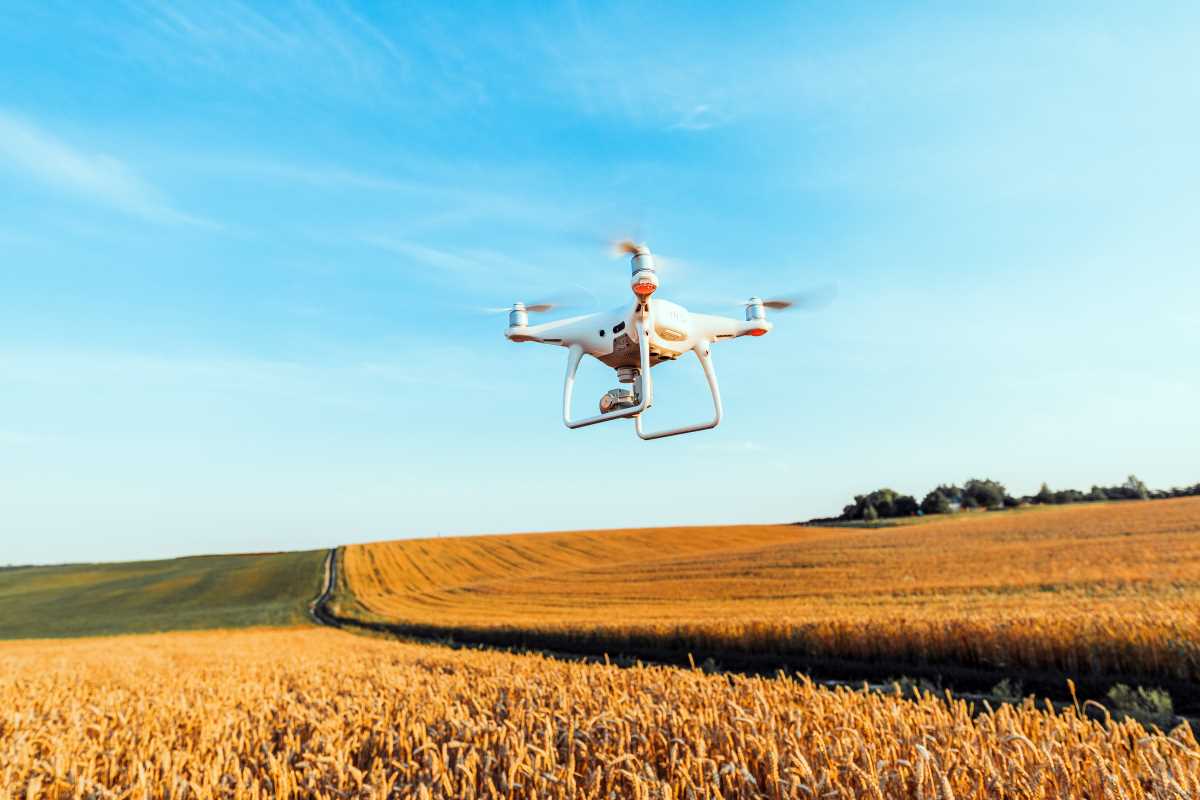Technology is moving faster than many of us can keep up with, reshaping industries and redefining the way we live and work. For young professionals, this rapid change translates into a wealth of career opportunities, particularly in tech. Beyond the obvious roles in software development or cybersecurity, there’s an exciting, lesser-known avenue that’s making waves and creating high-paying jobs: Human-Robot Interaction Design (HRI).
HRI is where technology, psychology, and design collide. It revolves around how humans and robots interact, with the goal of ensuring those interactions feel natural, intuitive, and effective. Picture a delivery robot navigating crowded streets, an AI-powered retail assistant helping customers, or robotic arms assisting surgeons in operating rooms. These innovations wouldn’t feel useful (or welcome in our lives) without skilled professionals ensuring they’re user-friendly and human-like. That’s where the magic of HRI comes in.
The following sections take a deep look into this fascinating area, exploring the field itself, why it’s a great career, and the diverse, lucrative roles available in HRI.
What Exactly is Human-Robot Interaction Design?
At its core, Human-Robot Interaction Design focuses on building effective partnerships between humans and machines. It’s an interdisciplinary field that straddles robotics, artificial intelligence (AI), UX design, behavioral science, and even cognitive psychology.
Consider the small, everyday details of using technology. Should a household cleaning robot speak or just communicate with sounds? Would a hospital delivery robot make staff feel safer if it had “eyes” to indicate where it’s turning? How about drones that deliver packages; what visual signals can show they're friendly and under control? None of these design elements happen by accident. They are the result of careful consideration and deep understanding of how humans perceive technology.
A key challenge in HRI is to make robots relatable and approachable without crossing into the uncanny valley—that eerie feeling you get when something looks almost human, but not quite. Striking the right balance of function, aesthetics, and emotional awareness ensures we’re comfortable sharing our spaces with machines.
For example, SoftBank’s famous robot Pepper was designed not only to welcome customers in stores but also to make eye contact and offer dynamic responses based on conversations. Similarly, Boston Dynamics’ robots have gained attention for their lifelike movements in loading, running, and even parkour. These cases reflect the blend of creativity and technical innovation that’s pivotal in HRI.
Additionally, the importance of inclusivity cannot be understated. HRI experts work to ensure robots accommodate diverse users. This means considering physical disabilities, cultural expectations, and personal preferences while designing interactions. A robot assistant in Japan, for instance, might be expected to bow as a cultural courtesy when greeting people, while the same behavior might seem odd in Western contexts. These nuances are carefully studied in this field, making it a space where empathy and technology go hand in hand.
Why HRI is a Career Worth Considering
If you’re looking for a career that combines technical and creative skills and promises stability with excitement, Human-Robot Interaction Design might just be your perfect fit. Here’s why.
1. High Demand, High Pay
According to industry analyses, the global robotics market is projected to grow from $34 billion in 2024 to well over $100 billion by 2030, driven largely by advances in AI and automation. With robots becoming integral across sectors—from healthcare to hospitality to logistics—the need for HRI experts has surged. Businesses need professionals who can bridge the gap between robotic functionality and human expectations.
Because this field requires a unique mix of skills (design, engineering, psychology, and more), HRI professionals are in high demand and rewarded well. Entry-level roles often start at $70,000 to $90,000 annually, while experienced HRI specialists can earn six-figure salaries. Senior professionals with advanced expertise frequently surpass $150,000, making it a profoundly lucrative field.
2. Long-Term Job Security
Unlike fads that come and go, HRI is anchored in the growing reliance on robotics and automation. Gartner predicts that smart robots will replace 20% of routine tasks in various industries by 2030, increasing the need for skilled designers. Careers in HRI not only provide security today but promise sustained relevance in the decades ahead.
3. Creative and Impactful Work
One of the most exciting things about HRI is its combination of science and creativity. You get to solve real-world problems in a way that directly impacts people. Whether it’s designing robots for companionship in elderly care or creating intelligent robotic tutors for underserved communities, your work can make a tangible difference.
4. Endless Variety Across Industries
The applications of HRI stretch far and wide, from banking (like AI-driven customer support) to urban planning (with robots managing traffic or delivering goods in crowded spaces). You could explore areas you’re passionate about while working in environments that challenge and inspire you. Want to design a robot for use on Mars? HRI is already part of NASA’s advanced space exploration projects.
By choosing HRI, you’re entering a world of endless possibilities where no two days or projects are alike.
Careers in HRI You’ve Probably Never Heard Of
If you’re intrigued by the idea of working in HRI, there’s no shortage of interesting roles to check out. Below are some of the most compelling ones.
1. Robot UX Designer
What They Do: Imagine working on robots that people interact with daily, like service robots in airports or personal assistants like Alexa. A Robot UX Designer focuses on improving these interactions so they feel smooth, engaging, and frustration-free.
Why It’s Cool: It’s not just about programming; you also get to leverage psychology and design principles. You’ll influence how robots "think," speak, and even move to feel natural to users.
Key Skills Required: Strong knowledge of graphic design tools (e.g., Figma or Adobe XD), psychology, and basic coding languages like JavaScript.
2. Emotion AI Specialist
What They Do: These professionals design AI systems capable of reading and responding to human emotions. Alexa noticing frustration in your tone and offering helpful suggestions? That's Emotion AI at work.
Why It’s Cool: You get to shape the next wave of AI tools that aren't just functional but empathetic. For instance, robots working as therapy aids must sense emotional cues to offer appropriate support.
Key Skills Required: Expertise in machine learning, neuroscience, programming (Python is common), and emotional analysis.
3. Human Factors Specialist
What They Do: These specialists make sure robots or AI systems are designed to suit human needs. This could involve ergonomic design to ensure a robotic arm feels intuitive in a factory or studying group psychology for robots that work as teams in medical environments.
Why It’s Cool: You’ll focus on user safety and comfort, blending anthropology and design to make robots genuinely helpful.
Key Skills Required: Proficiency in physical ergonomics, cognitive psychology, and industrial design.
4. Robot Animator
What They Do: Picture designing the way a robot waves, smiles, or reacts when spoken to. Animation in the robotics sphere ensures realistic movement for maximum relatability.
Why It’s Cool: It bridges robotics with Pixar-grade creativity. For entertainment robots or animatronics in theme parks, this role brings characters to life in spectacular ways.
Key Skills Required: Animation tools like Maya, programming knowledge, biomechanics, and storytelling abilities.
5. Healthcare Robot Specialist
What They Do: From surgical-assist robots to medication-delivery systems, these specialists ensure robots adapt to the unique dynamics of the healthcare sector while meeting regulatory standards.
Why It’s Cool: Your advancements could save lives, ease workloads for healthcare professionals, and provide better care for patients.
Key Skills Required: Biomedical engineering, healthcare regulations, and robotics systems integration.
How to Get Started in HRI
If this innovative field excites you, here’s how you can lay the groundwork for a career in HRI.
1. Build a Strong Educational Foundation
Focus on degrees or diplomas in related fields like robotics, human-computer interaction, cognitive science, or UX design. Universities like Carnegie Mellon, Stanford, and MIT are renowned for their courses in these areas. If formal education isn’t an option, online platforms like Coursera, Khan Academy, and edX offer certifications tailored to HRI fundamentals.
2. Cultivate Both Technical and Soft Skills
Technical knowledge (e.g., programming, machine learning) is critical, but creativity and empathy make HRI designers stand out. Balance your learning by enhancing both sets of skills.
3. Network and Join Communities
The HRI space is small but interconnected. Attend industry conferences such as the ACM/IEEE Human-Robot Interaction conference or courses like the Robot Design boot camps that take place globally. These open doors to mentorship opportunities.
4. Explore Real-Life Projects
Get hands-on experience via internships, hackathons, or by contributing to open-source robotic projects. Create case studies of your work and share them online to attract potential employers.
Set Your Sights on the Future
Pursuing a career in Human-Robot Interaction Design means contributing to an unprecedented technological evolution in human history. Not only will you be ensuring that robots fit seamlessly into our world, but you’ll also help shape their role in enriching humanity. If you thrive on problem-solving, creativity, and innovation, HRI offers both the challenges and rewards you’re seeking.
 (Image via
(Image via





